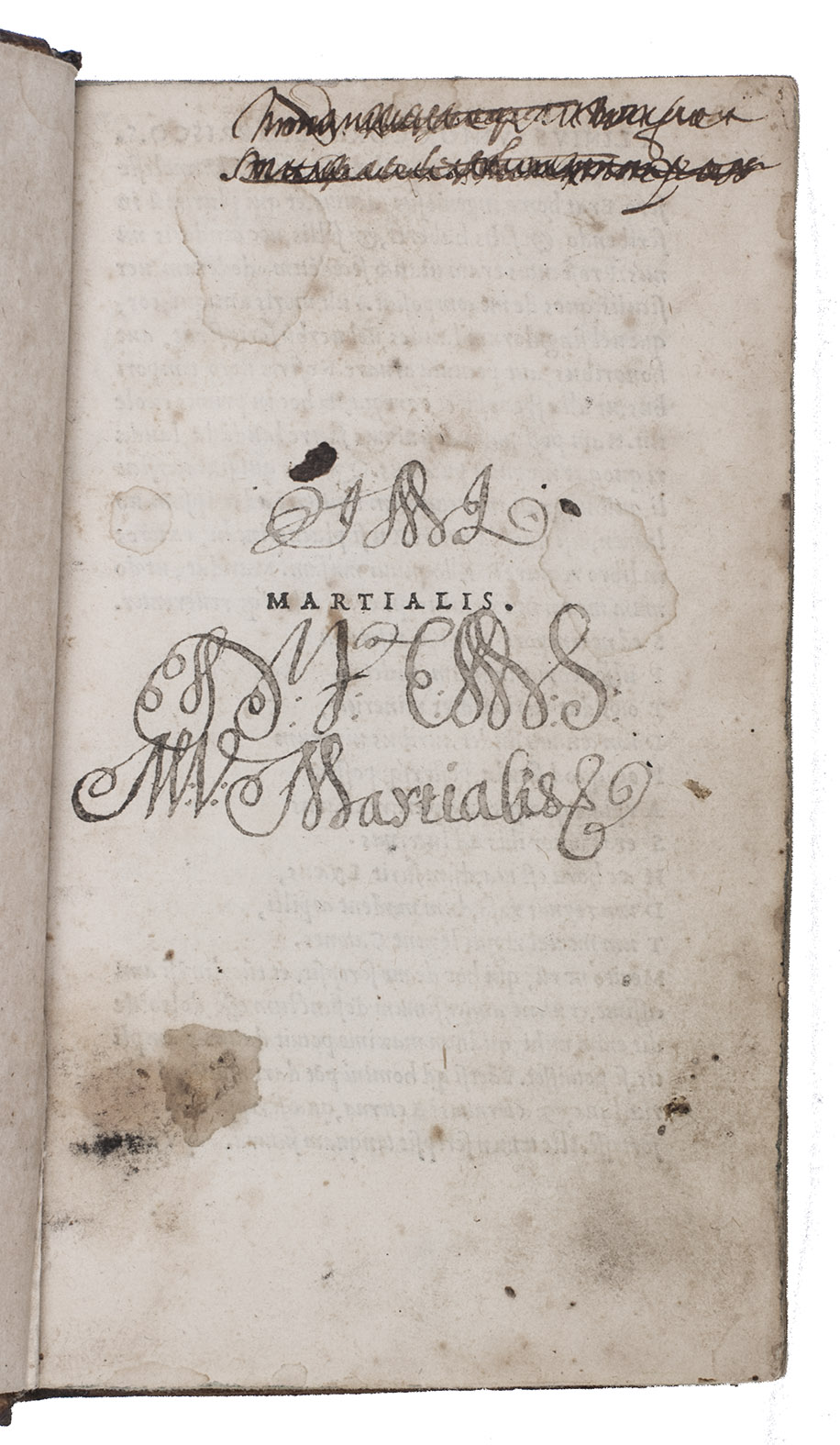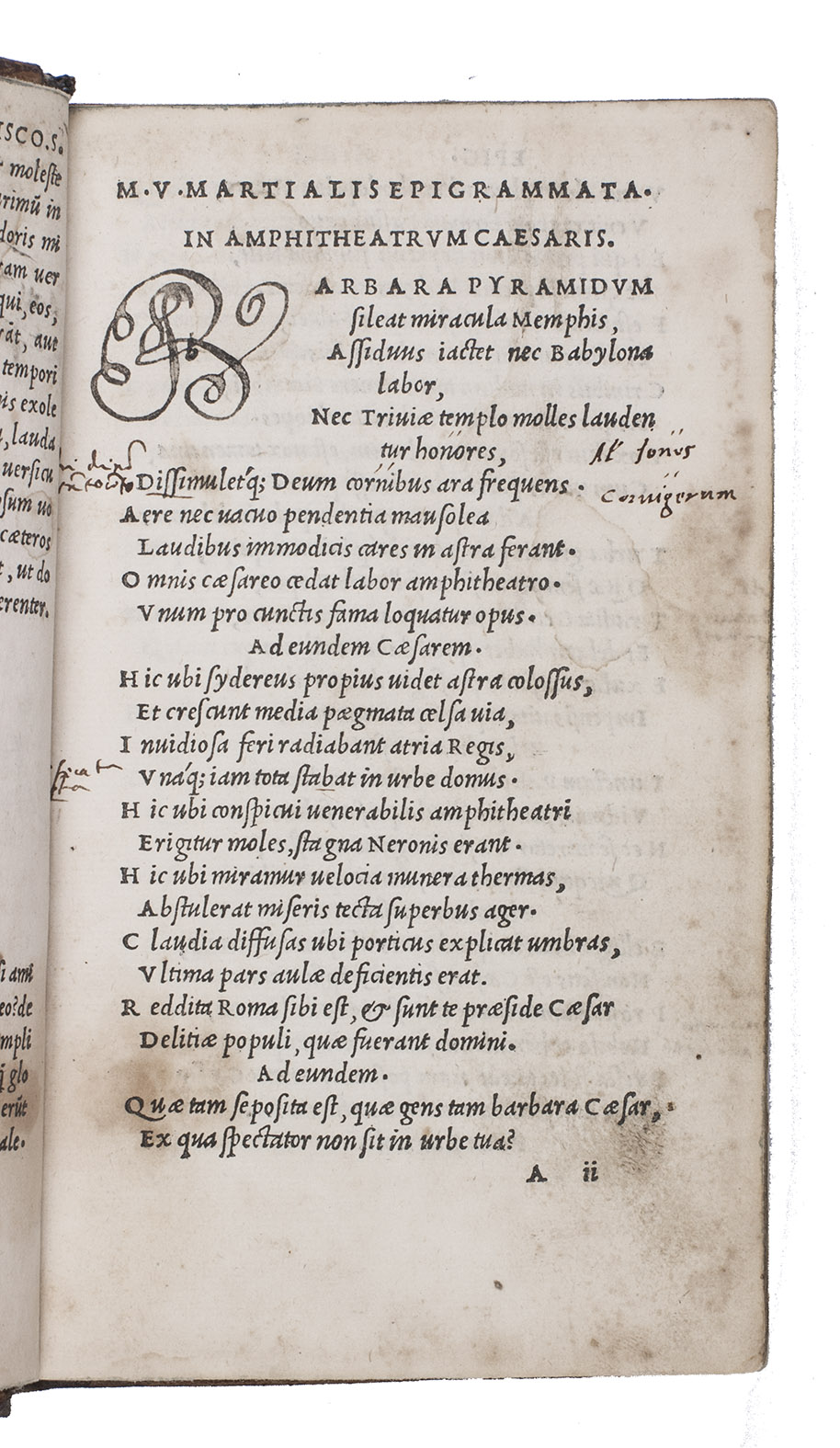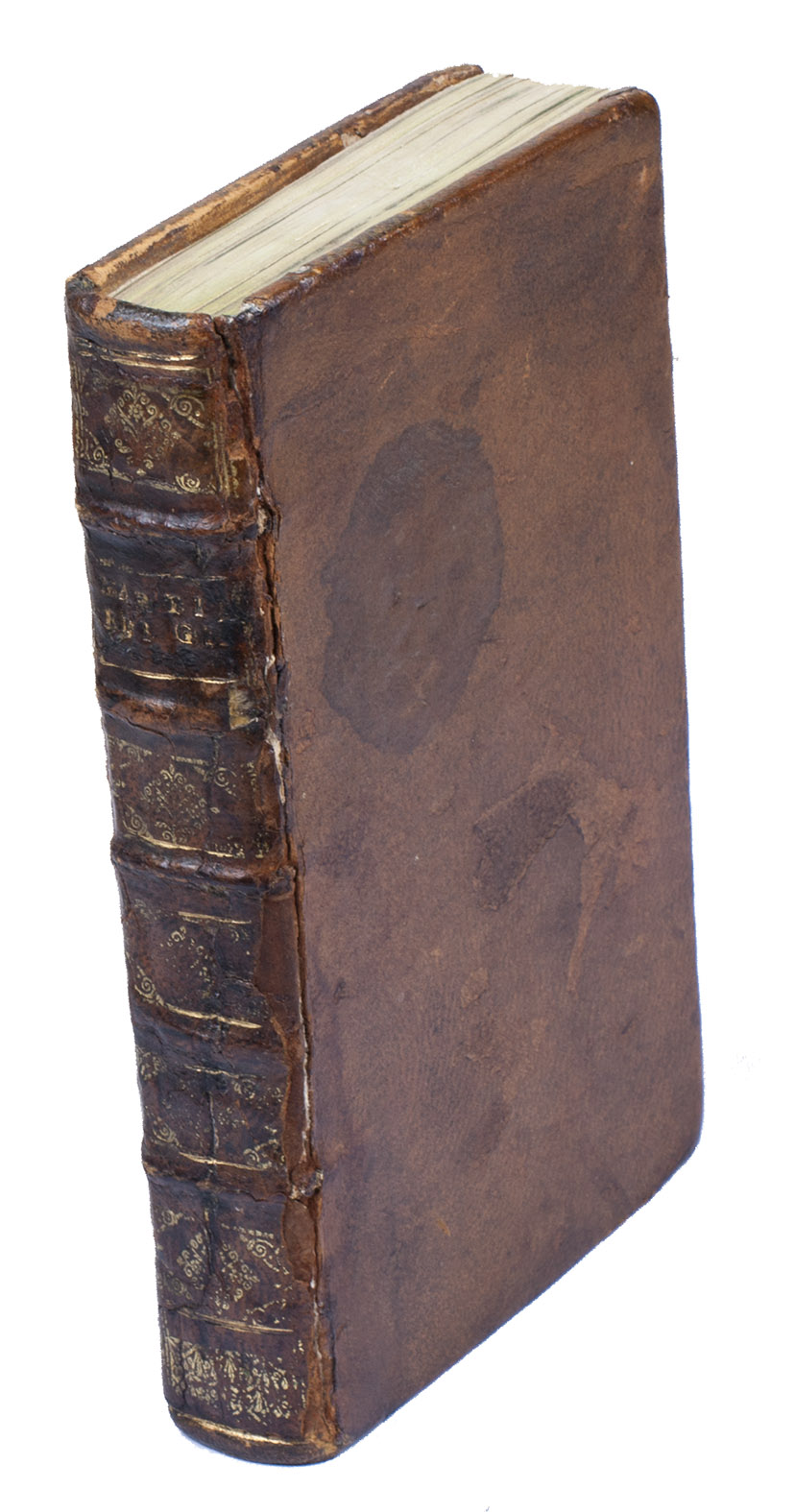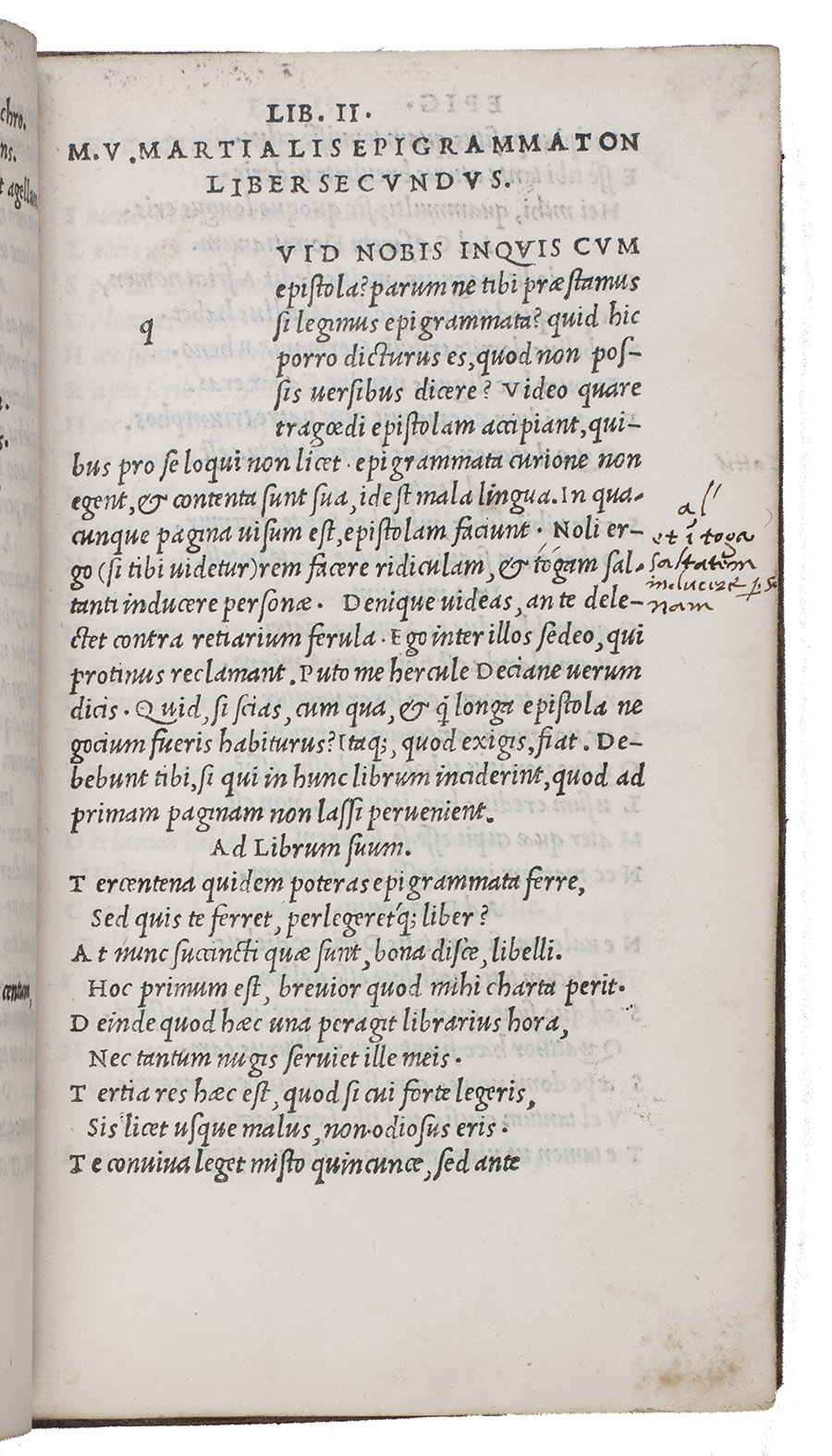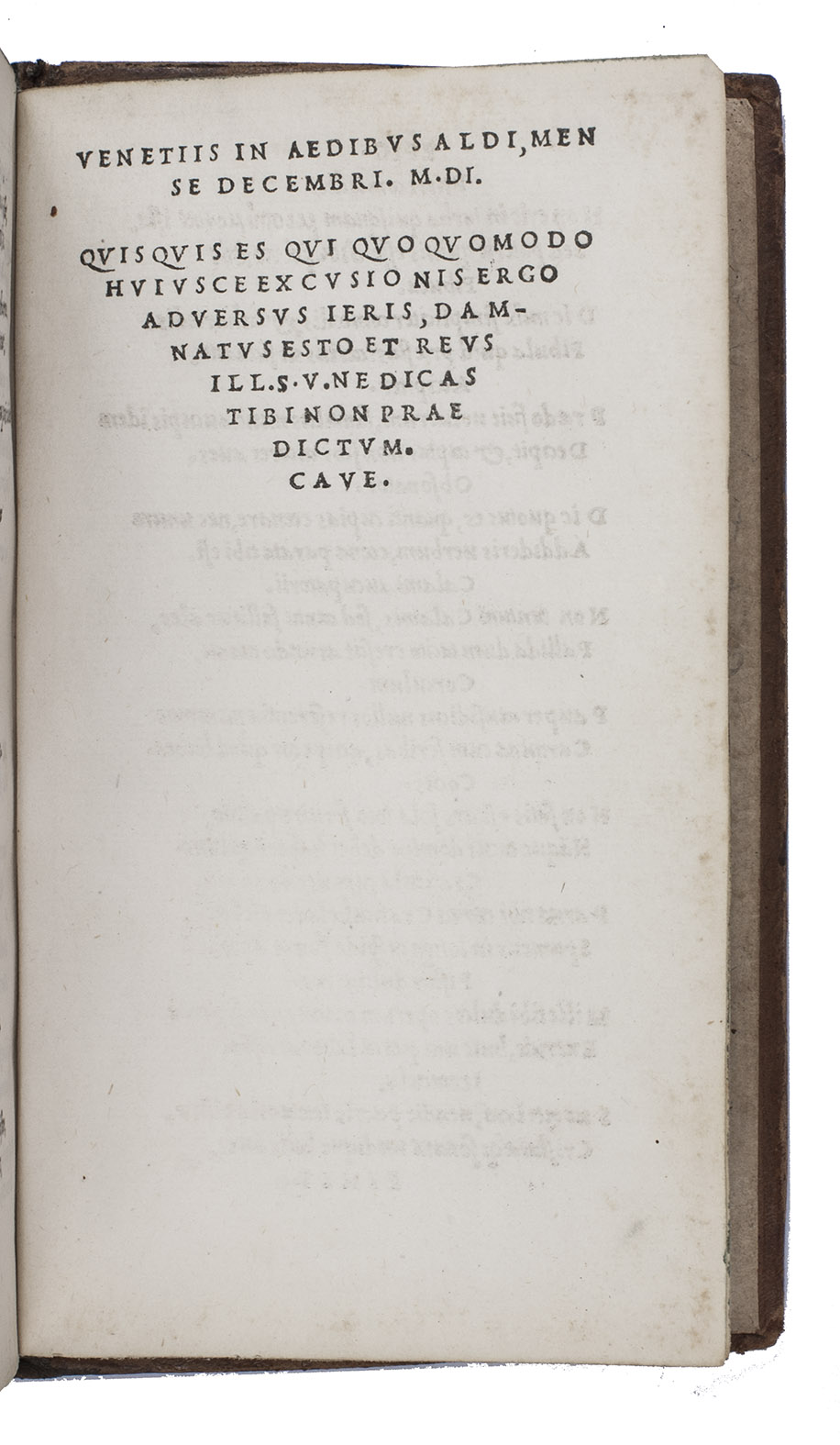MARTIALIS, Marcus Valerius.
[Epigrammata].
(Colophon: Venice, Aldus Manutius, December 1501). 8vo (16 x 10 cm). With 15 (mostly 6-line) spaces with printed guide letters left for manuscript initials. Except for an occasional word in Greek, the book is set entirely in the world's first italic printing type (with small upright capitals, which are also used, usually letterspaced, for running heads, headings, the opening line of each liber, etc.). Francesco Griffo cut it for Aldus, who uses it here 8 months after he introduced it in his Virgil. Tanned sheepskin (ca. 1700?), gold-tooled spine and board edges. [381], [3 blank] pp.
€ 4,750
First Aldine edition of Martial's epigrams, the fifth book in Aldus's series of octavo classics set in the world's first italic type, introduced with his octavo edition of Virgil in April 1501. While the octavo format was not new, it had been most common in devotional works and rarely if ever used for classics. Aldus used this format and the small and narrow italic type primarily for works in verse, which had fairly short lines. Perhaps for that reason, he also departed from what were then the normal proportions of sheets of paper. Aldus himself notes in the 1501 octavo edition of Juvenal and Persius that the books in this format "may be more conveniently held in the hand and learned by heart (not to speak of being read) by everyone", suggesting that they are both more portable and less expensive. He therefore met the needs of the growing market of students, as well as men of business who wished to be fashionably intellectual or simply enjoyed good literature.
Martial's epigrams, written between AD 86 and 103, provide not only a masterly model of Latin poetic style, but also a window into classical Roman society in the early years of the Empire, often relating situations and problems encountered in daily life and how people react to them, whether wisely or foolishly.
With an early owner's inscription struck through at the head of the first page and a few contemporary and later manuscript notes. Also on the first page are some attractive calligraphic trials (ca. 1700?). The initial B in the space left for that purpose at the opening of Martial's preamble appears to have been written by the same hand. With occasional water stains, browning or foxing, not severe and mostly confined to a few scattered quires, so still in good condition. A crack running nearly the whole length of the spine has been repaired, and some cracks remain in the hinges. Adams M689; Ahmanson-Murphy I, 37; Dibdin, Greek and Latin classics II, p. 229; Renouard, Annales ... Alde, p. 30, no. 7; USTC 841150.
Related Subjects:
